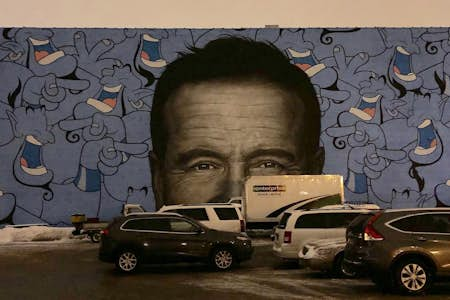Rating: ★★★★★
Released: 2007
Director: Joel & Ethan Coen
Starring: Josh Brolin, Tommy Lee Jones, Javier Bardem, Woody Harrelson
Streaming: Netflix, Sky Go, NowTV Movies, Amazon Prime Video (Rent: £2.49; Buy: £6.99)
Stay up to date with all your favourite shows - and know what your kids and grandkids are talking about - by taking out a subscription to a leading streaming service. Click a provider below to get started.
There’s a moment early in No Country For Old Men where Llewelyn Moss (Josh Brolin) has to shoot an attack dog with a pistol after diving into a river. A lesser film would have had the character shoot and miss a few times, or realise the gun was wet and then force him to use his hands.
Instead, Moss kneels, meticulously unloads his handgun, blows into it to dry the chamber, and reloads as we watch the dog paddle through the river behind him and close the ground. It’s an unusually tense way to handle a situation that most modern films would shrug off without much thought.
The Coens aren’t strangers to violence in their films. In the last ten minutes of Fargo, there is a rather grisly scene involving the misuse of a woodchipper. Miller’s Crossing features a sequence of nearly a full minute of uninterrupted machine gun fire. But before No Country For Old Men, violence in their pictures has never been quite so brutal or quite so savage.
No Country For Old Men is a “neo-Western” crime thriller that stars Brolin as a hunter who happens upon the aftermath of a drug deal turned sour and makes off with an unclaimed briefcase containing two million dollars. Tommy Lee Jones plays a laconic sheriff suffering from a crisis of faith who is more a commentator than a lawman as far as the film is concerned. And Bardem plays contract killer Anton Chigurh in perhaps the single most chilling performance of the 21st century to date.
The film is based on the Cormac McCarthy novel of the same name, which it stays mostly true to throughout its two-hour runtime. It swept the 2008 Oscars, beating There Will Be Blood to Best Picture, collecting eight nominations and four wins on the way.
This is because shot for shot, sentence for sentence, this film is technically perfect. It is beautiful to look at (thanks in no small part to the work of cinematographer Sir Roger Deakins), and faithfully harrowing in the way it adapts its source material. It is grim, and for those who haven’t seen it before nor read the book, surprisingly bleak for a Hollywood blockbuster.
But this bleakness is what sets No Country For Old Men aside from other pictures. It is a braver film, and in many ways a more honest one for it. Without spoiling its last 20 minutes, the ending and overall trajectory of the film are for many immediately unsatisfying, but that gives it so much more gravitas, makes it so much more memorable.
This film is deconstructive, and it reminds me of Clint Eastwood’s Unforgiven in many ways. Both films show us that violence and crime are not as glamorous as we might think. Both remind us that the outlaw life is not glorious; it is lonely, paranoid, perplexing, and cruel. Only the harshest personalities are suited to it.
It’s because of this that No Country For Old Men (just like McCarthy’s bibliography) is horrifying. It asks questions about what happens when ordinary people face unspeakable, extraordinary evil. It reminds us that terrible actions are generally the domain of terrible people. It refuses to be merciful or sympathetic. It refuses to give us the ending we want, to tell the story we want it to tell.
Instead, it acknowledges that most people, even those we might expect it of, aren’t willing to die for justice. Most people aren’t willing to die at all. And it shows us that being a successful criminal is often about having the capacity to be the most savage, inhumane person in the room. But it does so in a way that is so unbelievably gripping. For that reason alone, if you haven’t seen this film yet, then I honestly could not recommend it more.
Image Credit: Tom Francis, CC BY-SA 2.0









